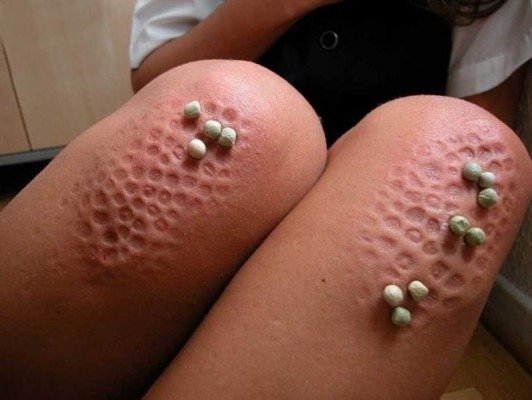Anxiety Disorders





What Are They?
An anxiety disorder is a combination of fear, worry, and other negative feelings and physiological responses, like aches and pains, sweating, elevated heart rate, and nausea. Anxiety is worry about the future, while fear is worry about the present

The five Families
Phobia: an intense irrational fear
Generalized Anxiety Disorder (GAD): Constant, low-level anxiety
Panic Disorders: Sudden bursts of acute anxiety
Obsessive-Compulsive Disorder (OCD): constant, unwanted obsessions and compulsions
Post-Traumatic Stress Disorder (PTSD): anxiety from memory of trauma

Why do behaviorists study them?
The learning perspective says that anxiety disorders are learned, reinforced, and shaped by societal pressure

Behaviorism
It doesn't make sense for all fears to be instinctive because of the sheer number of them. Irrational fears especially point to social factors in influencing individual anxiety towards different stimuli

Why do biologists study them?
The biological perspective says that anxiety disorders are manifestations of life-saving instincts for life-and-death situations

Natural Selection
Rational fears cause involuntary physiological reactions that seek to distance the individual from a perceived threat, an evolutionarily beneficial instinct

PTSD

What Is It?
Post-Traumatic Stress Disorder is an anxiety disorder caused by trauma or severe stress. Symptoms only appear after the critical event and do not necessarily appear for every victim of trauma
History
The symptoms of PTSD have been recorded since the Greeks. It was studied extensively during the world wars and was only given its name after Vietnam

Symptoms
Four or more weeks of haunting memories, nightmares, social withdrawal, jumpy anxiety, and sleep problems are symptoms of PTSD. People with PTSD are at a higher risk of suicide

Symptoms
PTSD symptoms cause an over-reactive adrenaline response, which creates neurological patterns in the brain that are not easy to bounce back from. These patterns make the body respond to similar conditions to the trauma. Additionally, the hippocampus (memory in time and place), the amygdala (emotional memory), and the prefrontal cortex (decision-making) are all changed by PTSD

At Risk or Not?
Some people are more resilient than others. Of the few who develop PTSD, about 10 percent of men respond to trauma with PTSD as opposed to 20 percent of women. For those who survive the trauma, this survivor resiliency can lead to a period of growth

Demographics
People with interpersonal trauma are more likely to develop PTSD than people. About half of people develop PTSD following rape. Children are less likely than adults to develop PTSD after trauma, especially if they are under ten. In the US about 3.5% of adults have PTSD in a given year and 9% of people develop it at some point in their life while the rest of the world is between 0.5% and 1%.

Treatment
Early counseling can help prevent PTSD but is not effective among all people following trauma. The main treatments for people with PTSD are counselling and medication. Counseling may occur one-on-one or in a group. Antidepressants that selectively inhibit the reuptake of serotonin are common medications used for PTSD and result in benefit in about half of people.

Adjustment Disorders
and

Adjustment Disorders
An event that happens in life provokes an abnormally strong negative response compared to the apparent lack of gravity of the event. They are aharacterized by symptoms similar to acute stress such as lack of responsiveness and mild depression and although they are less serious, typically last for a few months after the life stressor occurs.


Somatoform DisorderS

What Is It?
A mental illness that causes bodily symptoms including physical pain despite no physical cause, substance abuse, or a different mental illness.
Patients become excessively worried about the symptoms themselves, often out of proportion to their severity.
Physical symptoms appear entirely as a result of anxiety, like an opposite placebo effect.

Two Types of Somatoform disorders
1. Hypochondriasis
2. Conversion Disorder

Hypochondriasis (Somatic Symptom Disorder)
A condition characterized by misinterpretation of physical symptoms and fearing that one has a serious illness despite appropriate medical evaluation and reassurance
Chronic; can last a lifetime
Over 200,000 cases in the US per year
Conversion Disorder
A severe physical problem is evident but no biological cause can be found
eg. going blind after witnessing a murder
More common among females

Bibliography
-
The Big Lebowski. PolyGram Filmed Entertainment Presents, 1998.
-
Bjournal.com. 22 March 2016. http://bjournal.com/wp-content/uploads/2015/12/bigstock-d-business-merge-concept-42970804.jpg
-
Cdn.psychologytoday.com. N. p., 2016. Web. 21 Mar. 2016.
-
"Conversion Disorder". 千山万水. N. p., 2015. Web. 22 Mar. 2016.
-
"File: Military Dog Barking.JPG - Wikimedia Commons".Commons.wikimedia.org. N. p., 2007. Web. 21 Mar. 2016.
-
"File: USMC-120503-M-9426J-001.Jpg - Wikimedia Commons".Commons.wikimedia.org. N. p., 2012. Web. 21 Mar. 2016.
-
"Friday Funnies For March 13Th 2015 ~ Hiddenlevel". Hiddenlevel.org. N. p., 2016. Web. 21 Mar. 2016.
-
The Godfather. Dir. Francis Ford Coppola. Paramount Pictures, 1972.
Bibliography
-
Hembree, John. "The Naked Heart Of Hosea." John Hembree. N.p., 22 Sept. 2015. Web. 22 Mar. 2016.
-
Hill, Aja. "Aja Hill, PsyD." Aja Hill PsyD. N.p., 28 June 2014. Web. 22 Mar. 2016.
-
Historic-columbus.org. N. p., 2016. Web. 22 Mar. 2016.
-
Hostgator.co.in. N. p., 2016. Web. 22 Mar. 2016.
-
"Madagascar - Melman." YouTube. YouTube. Web. 21 Mar. 2016.
-
Memesvault.com. N. p., 2016. Web. 22 Mar. 2016.
-
Munch, Edvard. The Scream. 1893. National Gallery, Oslo, Norway.
-
McCall, Cheyenne. Female Empowerment. 2013. Manual Redeye. Web. 22 Mar. 2016. <http://www.manualredeye.com/2013/12/14/senior-creates-female-empowerment-club/>.
Bibliography
- PTSD. Post Traumatic Stress Disorder (PTSD) Treatment in Temecula, CA. Web. 22 Mar. 2016. <http://aspirewellnessclinic.com/wp-content/uploads/2015/03/PTSD.jpg>.
-
Snakes on a Plane. Dir. David R. Ellis. Prod. Gary Levinsohn, Donald P. Granger, and Craig Berenson. By John Heffernan and Sebastian Gutierrez. Perf. Samuel L. Jackson and Julianna Margulies. New Line Cinema Corporation, 2006.
-
"Somatic Symptoms : Bipolar Network News". Bipolarnews.org. N. p., 2013. Web. 22 Mar. 2016.
-
"These Things Will Make You Feel Very Uncomfortable For Reasons You Can't Explain". Guff. N. p., 2016. Web. 21 Mar. 2016.
-
"Trypophobia Is A Real, Terrifying Thing, And You Definitely Have It". BuzzFeed. N. p., 2016. Web. 21 Mar. 2016.
-
University, Saint. "Somatoform Disorder At Saint Bonaventure University - Studyblue". StudyBlue. N. p., 2016. Web. 22 Mar. 2016.
-
1.bp.blogspot.com. N. p., 2016. Web. 22 Mar. 2016.
Bibliography
- "The Cure For Hypochondria - 180 Degree Health." 180 Degree Health. 2013. Web. 22 Mar. 2016.
-
"31 Photos That Will Make You More Uncomfortable Than They Should".BuzzFeed. N. p., 2016. Web. 21 Mar. 2016.
Information Sources:
- "Generalized Anxiety Disorder." Anxiety Disorder Association of America. N.p., n.d. Web. 22 Mar. 2016.
- Myers, David G. Psychology, Tenth Edition. New York: Worth Publishers, 2013.
- "Specific Phobias | Anxiety Disorders Association of America, ADAA." Anxiety Disorders Association of America, ADAA | Anxiety Disorders Are Real, Serious, and Treatable. N.p., n.d. Web. 22 Mar. 2016.
- "Understanding Anxiety." Anxiety Disorders Association of America. Anxiety Disorders Association of America, 2010. Web. 22 Mar. 2016.